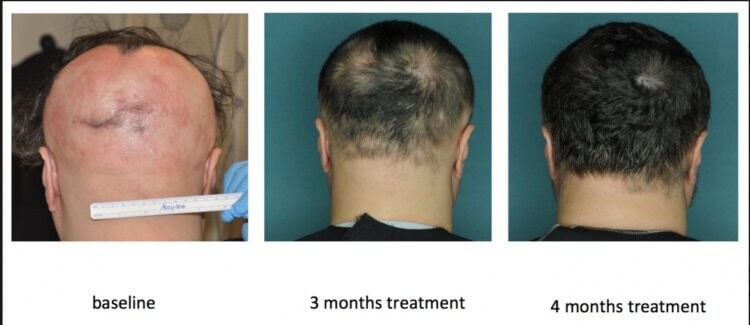
Alopecia areata is a common condition that causes hair loss in small, round patches. Many people who suffer from this condition wonder if a hair transplant for alopecia areata is possible. In this article, we will explore the causes of alopecia areata, how hair transplants work, and whether this treatment is suitable for those with this type of hair loss.
What Is Alopecia Areata?
Alopecia areata is an autoimmune disorder where the body’s immune system mistakenly attacks hair follicles. This leads to hair loss in small, circular patches on the scalp, and sometimes on other parts of the body. While the exact cause is unknown, it is believed to be linked to genetics and environmental factors.
Types of Alopecia Areata
There are different types of alopecia areata, including:
- Patchy Alopecia Areata – Small bald patches appear on the scalp.
- Alopecia Totalis – Complete loss of hair on the scalp.
- Alopecia Universalis – Total hair loss across the entire body.
Some people with alopecia areata experience regrowth, while others may struggle with persistent hair loss.
How Does a Hair Transplant Work?
A hair transplant is a procedure where hair follicles are taken from one part of the scalp (donor area) and transplanted into bald areas. There are two main techniques:
- FUT (Follicular Unit Transplantation) – A strip of skin with hair follicles is removed and implanted in bald areas.
- FUE (Follicular Unit Extraction) – Individual hair follicles are extracted and transplanted to bald spots.
Hair transplants are effective for male pattern baldness and other permanent hair loss conditions. But is it a solution for alopecia areata?
Can a Hair Transplant Work for Alopecia Areata?
The effectiveness of a hair transplant for alopecia areata is questionable. Unlike other types of baldness, alopecia areata is caused by an immune system attack on hair follicles. Even after a transplant, the immune system may continue to attack the newly transplanted hairs, leading to poor results.
Challenges of Hair Transplants for Alopecia Areata
- Autoimmune Attack – The immune system may attack transplanted hair, leading to further hair loss.
- Unpredictable Hair Regrowth – Hair may grow back naturally in some cases, making a transplant unnecessary.
- Limited Donor Hair – If alopecia areata spreads, there may not be enough healthy hair for transplantation.
- High Cost – Hair transplants can be expensive, and the success rate for alopecia areata patients is low.
Alternative Treatments for Alopecia Areata
Instead of a hair transplant for alopecia areata, there are other treatments that may help manage the condition.
1. Medications
- Corticosteroids – These are anti-inflammatory drugs that help suppress the immune system. They can be taken as injections, creams, or oral tablets.
- Minoxidil (Rogaine) – This topical solution may help stimulate hair growth.
- Anthralin – A medication that alters immune function and may help regrow hair.
2. Light Therapy (Phototherapy)
Phototherapy, also called UV light therapy, is used to stimulate hair growth by reducing immune system activity on the scalp.
3. Platelet-Rich Plasma (PRP) Therapy
PRP therapy involves drawing blood, processing it to concentrate platelets, and injecting it into the scalp to promote hair growth.
4. Wigs and Hairpieces
For severe cases, wigs or hairpieces provide an easy and effective way to deal with hair loss without medical procedures.
Who Is a Good Candidate for Hair Transplant?
While a hair transplant for alopecia areata is generally not recommended, some people with stable hair loss may be considered. A good candidate:
- Has stable alopecia areata (no recent hair loss for several years).
- Has sufficient donor hair available for transplantation.
- Understands the risks and limitations of the procedure.
Success Stories: Can a Hair Transplant Ever Work?
Although rare, some people with long-term stable alopecia areata have undergone hair transplants with partial success. However, the chances of hair loss returning remain high.
Conclusion: Is a Hair Transplant for Alopecia Areata a Good Idea?
A hair transplant for alopecia areata is usually not the best solution. Since the condition is caused by an immune system attack, transplanted hair may not survive. Instead, patients should consider alternative treatments like medications, light therapy, or PRP. Consulting a dermatologist or hair specialist is the best way to find a suitable treatment plan for alopecia areata.
By understanding the nature of this condition and the available treatments, individuals can make informed decisions about their hair restoration journey.
